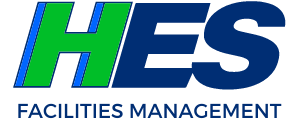Whether you’ve worked with the same facilities management team for a few months or decades, there’s always room for improvement. While unexpected incidents are inevitable with any facilities management provider, the response and remediation plan should be swift, and the distraction should be minimal. In short, periodic cleaning issues should never be a recurring, consistently worsening situation – and you need to know when to switch to a new provider.
The right facilities maintenance team will bring open communication and standardized quality assurance practices to your program, resulting in continuous improvements, with your satisfaction being their top priority.
How do facilities programs affect learning environments?
We believe that better facilities maintenance programs create better learning environments and allow administrators, faculty, and staff to focus on their educational mission. In contrast, we believe substandard results in your custodial, maintenance, and groundskeeping programs can affect everything from enrollment, student achievement, school morale and pride, to staff recruitment and retention.
When should you switch to a new facilities maintenance provider?
One sign of a good match is when “make it right” is your facilities maintenance provider’s mantra – and the team follows through on it, keeping you informed of progress along the way. After all, this is how the daily process should be, and is the whole reason you likely elected to partner with facilities experts for these services in the first place.
But what do you do if your current provider just isn’t up to the task? Moving to a new facilities management provider can be a difficult decision for even the most experienced educational administrators. After all, change can be scary for everyone. If it’s the first time you’ve felt dissatisfied with your facilities team, by all means, give them an opportunity to show the quality and consistency you’ve experienced with them in the past.
However, if you’ve continuously addressed the situation and received reassurances from your provider, but instead of returning to satisfactory performance they seem overwhelmed or demonstrate apathy, it’s time to consider a more capable provider with a customer-first culture – one who treats both internal and external customers as valued partners.
We’ve compiled the following questions that can help you decide whether it’s time to cut ties with your current facilities management team, and what to look for in a new provider.
Are you satisfied with the range of services they offer?
Every educational institution will have different facilities requirements and challenges. If your provider doesn’t offer a broad array of custodial, groundskeeping, and maintenance services, you’ll be forced to bring in another contractor to fulfill all your needs.
A full-service facilities management provider is in a better position to serve you and your students, especially as your needs grow and change. And if that provider specializes in educational environments, even better! That means they can offer a shorter onboarding process, follow a proven and successful blueprint, and reach full capabilities in less time, because they understand the specific challenges educational campuses present, with processes in place to address those unique needs.
Ultimately, a full-service facilities management provider allows for smoother, more streamlined operations.
Are they committed to continuous improvement?
Your facilities management team should stand by their work – but they should also be constantly on the lookout for ways to improve your program. Does your current provider do the following?
- Set ambitious, measurable goals and key performance indicators (KPIs)
- Use a robust quality assurance program to track performance in real time
- Analyze data and share results in periodic reviews or committee meetings
- Recommend and implement program improvements each year
When you work with a provider that checks all these boxes, you’ll see a program that keeps your facilities in order even when your needs change over time.
Do they provide clear and predictable pricing?
While price is always a factor for educational facilities, choosing a provider based on low price alone can have detrimental consequences.
For instance, a provider might come in with a low-price proposal by excluding some important services – which means you’ll be surprised with extra costs down the road.
“Forgotten” costs could be due to inexperience on the part of your provider, or they could be an indication of less-than-exemplary business practices. Either way, if your current provider is less than crystal clear about program costs, that’s a big red flag.
A facilities management provider that truly prioritizes client needs and satisfaction will ensure clear and predictable pricing and stand behind their proposed program. A good place to start is by seeking out a facilities maintenance team that offers an annual fixed price for their turnkey program(s).
Are they responsive, even in unexpected situations?
Unforeseen problems will arise on even the best-managed campus or school building. No one, for instance, could have predicted the impact of the pandemic on schools, as facilities teams took on the huge responsibility of creating safer, cleaner learning spaces.
While few difficulties will rise to the level of COVID-19, those that do crop up deserve the full attention of your facilities maintenance provider. If the unexpected happens, can your current provider respond with expert options, then implement them? If the answer is anything less than an enthusiastic yes, consider switching to a facilities management team that you can rely on when new challenges appear.
Three of the most important qualities to look for are:
- Clear, frequent, and transparent communication
- Strong onsite leadership and ample support from regional and corporate resources
- Long-term, proven experience in educational facilities
Work with the right facilities management team
Want to know more about how HES can create a better facilities maintenance experience for you?Contact us at info@hesfacilities.com.
Disclaimer
The illustrations, instructions, and principles contained in this website are general in scope and for marketing purposes. We assume no responsibility for: managing or controlling customer activities, implementing any recommended measures, or identifying all potential hazards.

